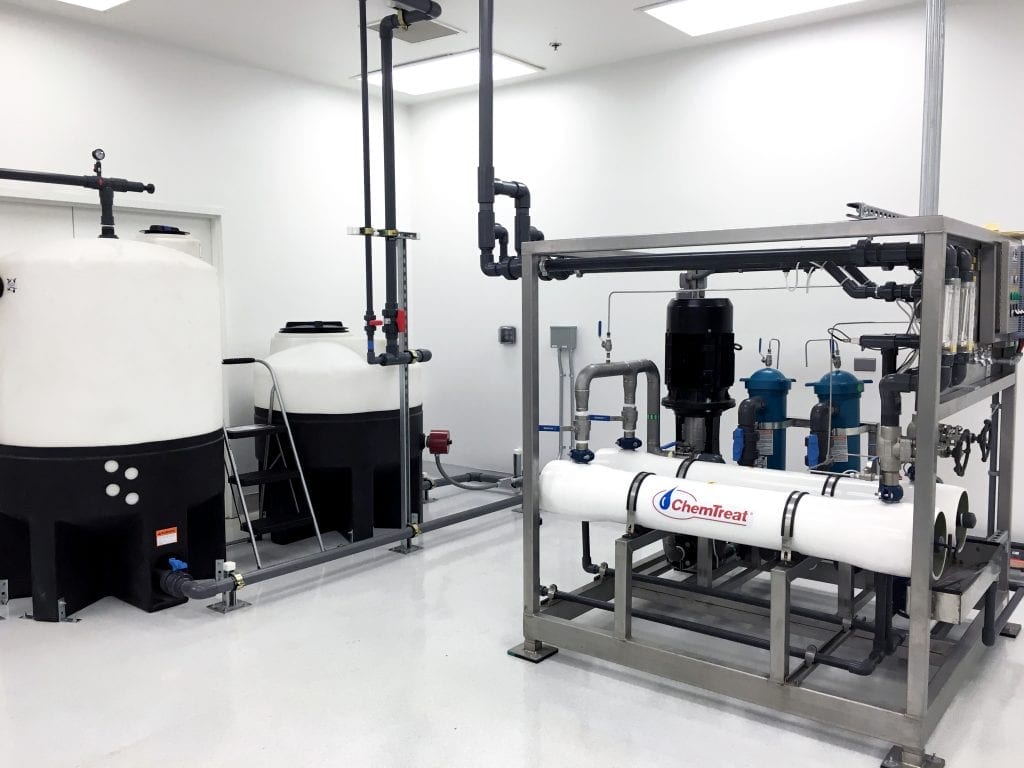What is Reverse Osmosis Membrane Technology?
Reverse osmosis (RO) membrane technology has gained greater popularity in recent years, especially prior to ion exchange processes. It can significantly reduce the amount of regenerants, such as salt, sulfuric acid, and caustic. In addition, utilizing an RO reduces the makeup water conductivity for low-to-medium pressure boilers, allowing for lower boiler blowdown needs and increased cycles of concentration.
With industrial facilities using more municipal wastewater and industrial reuse for boiler and process makeup, membrane technology usage is expanding.
Water scarcity and ambitious environmental sustainability programs make RO an important aspect of water treatment for many industrial facilities.
ChemTreat personnel have vast background experience with industrial reverse osmosis (RO) and membrane filtration systems for refineries, primary metals manufacturing, commercial & institutional, and bottling applications. Our field and technical consultants can customize an RO antiscalant program to match your incoming water chemistry and cleaning regimen to help keep your system operating efficiently and extend RO membrane life.
Effective Reverse Osmosis Water Treatment
One key to any membrane system is a well-designed and monitored pretreatment system. Frequently monitoring water chemistry, microbiological activity, Silt Density Index (SDI), and other fouling potentials provides a better understanding of RO operation. Looking for key tell-tale signs within the pretreatment system and observing trending data can help you spot problems before they occur. For example, knowing where bacteria can build in a system and understanding the nutrients in the makeup feedwater are factors that can help predict risk of RO fouling.
Various types of filtration equipment with different media are used to remove certain constituents. Equipment includes activated carbon filtration, iron filtration, sand, dual- and multi-media filtration, microfiltration, and ultrafiltration. Knowing how to operate this equipment efficiently is important to successful RO operation. Understanding these potential problems can help you know when to clean the RO, what RO cleaner to use, and what stage requires cleaning.
ChemTreat offers solutions to monitor and reduce microbiological growth formation in the cartridge filter housing and on the RO membrane using approved microbiocides and aqueous chlorine dioxide.
ChemTreat Membrane Laboratory Services

ChemTreat’s state-of-the-art reverse osmosis laboratory located in San Diego, California offers a complete array of laboratory services to improve membrane performance and develop new formulations for specific applications.
The ChemTreat RO lab performs membrane autopsies, which include unbiased, expert evaluation and inspection of membranes to identify the causes of membrane failure in microfiltration (MF), ultrafiltration (UF), nanofiltration (NF), and RO membranes. Membrane autopsies include the physical dissection of a membrane element or module, in-depth analytical testing, results interpretation, reporting, and recommendations. The turnaround time for membrane autopsies is only 10 business days.
Other lab capabilities include:
- Product development and performance testing
- RO cleaning studies
- 8-in element testing and cleaning
- Microbiological analysis
